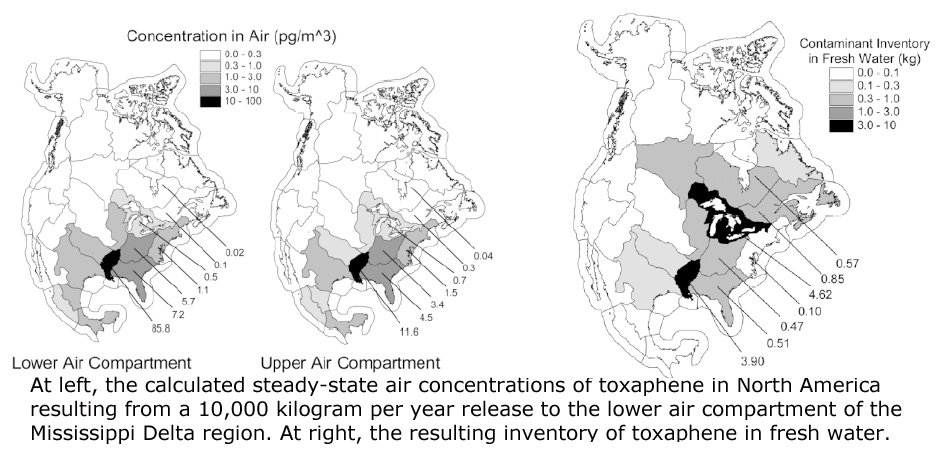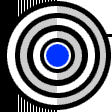|
|
 |
Whether they are dissolved in water, sorbed to particles or gaseous,
pollutants can travel in the environment. Some move thousands of miles
from their point of origin, crossing oceans and continents. Many also
cross media, traveling as a gas, perhaps dissolving in rain droplets or
lakes and streams, then finding their way into soils, plants, animals
and humans. To researchers studying the risks to human health posed by
chemicals like pesticides, and the organic products of industrial processes
and combustion, tracking the movement of these chemicals through the environment
is a challenge.
Now a collaboration between researchers at Berkeley Lab's Environmental
Energy Technologies Division and Trent University's Canadian Environmental
Modeling Center in Canada has resulted in a computer model capable of
simulating the long range transport (LRT) and cross media transfers of
pollutants throughout the north American continent. BETR North America,
the BErkeley-TRent model, is the first designed to evaluate the fate of
these multimedia pollutants at the continental scale.
"The long-range transport of simple gases such as nitrogen oxides,
sulfur oxides, ozone, and carbon dioxide have been extensively studied,"
says Thomas McKone, Senior Scientist at Berkeley Lab, and Adjunct Professor
at UC Berkeley's School of Public Health, "but the movement and impacts
of multimedia pollutants are still poorly understood." Multimedia
pollutants such as the persistent organic pollutants (POPs) can transfer
or partition among the atmosphere, airborne particles, the soil surface,
water, and vegetation, and can ultimately accumulate in living organisms.
Better health risk assessment of these pollutants requires a better understanding
of their transport from a source or specific region throughout the environment.
Managing chemicals that are subject to LRT is also a challenge for policy
makers, since these chemicals can originate in one jurisdiction, and end
up accumulating in other physically distant regions. Most other existing
models are scaled at roughly several hundred miles square, not large enough
to address the North American continent as a whole.
BETR models North America's environment as a group of 24 ecological regions
with boundaries based on geographic features mainly waterways and soil
types (see figure 1).
The environment within each region is modeled as a system of seven compartments:
upper atmosphere, lower atmosphere, vegetation, soil, fresh water, coastal
water and freshwater sediment. A database of hydrological and meteorological
data provides the basis for modeling transport between regions in the
atmosphere, freshwater and coastal water media. The data are compiled
with the help of a geographical information system. Seven equations describe
the contaminant fate in each region of the model, so 168 mass balance
equations are needed to apply the model to the 24 regions of North America.
The model's structure is flexible enough to be adapted to other large
continental areas such as South America, Europe or Asia.
Figure 2 is an example of the model's output, showing the distribution
of the now-banned pesticide toxaphene. Once used extensively in the southeastern
United States, toxaphene is a widely-studied persistent organic pollutant.
Researchers suspect that it is accumulating in the Great Lakes and their
aquatic food chains as the pesticide evaporates from the soils in which
it was deposited. The figure shows the steady-state distribution of toxaphene
throughout the 24 regions as a result of a hypothetical release of 10,000
kg/year to the lower air compartment of the Mississippi Delta region.
 |
 |
|
|
| [click to view] |
|
|
|
"We are currently completing the model's parameters," says
McKone, "including flow rates of air and water between regions, and
human exposure calculations. Once the model parameters have been completed,
its results can be compared with measured concentrations of contaminants
in remote locations to evaluate the model's performance and deduce continental-scale
mass balances."
The model was developed by Matthew MacLeod, David Woodfine and Don Mackay
(Trent University), Thomas McKone (Berkeley Lab), Deborah Bennett formerly
Berkeley Lab, now Harvard School of Public Health) and Randy Maddalena
(Berkeley Lab).
|

